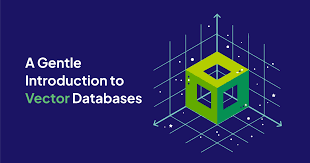Vector Databases: A Comprehensive Guide
Introduction
Vector databases have emerged as a powerful tool for managing and querying large-scale datasets that can be represented as numerical vectors. These databases are particularly well-suited for applications such as recommendation systems, image and video search, natural language processing, and anomaly detection.
This white paper provides a comprehensive overview of vector databases, including their underlying principles, key components, and applications. We will also discuss some of the challenges and future trends in this field.
Understanding Vector Databases
A vector database is a specialized database designed to store and efficiently retrieve high-dimensional numerical vectors. Unlike traditional relational databases that store data in tables, vector databases store data as individual vectors, which are essentially ordered lists of numbers.
Key Components of a Vector Database:
- Vector Embeddings: The process of converting complex data, such as text, images, or audio, into numerical vectors. This enables the database to efficiently store and compare data.
- Similarity Search: The ability to find vectors that are similar to a given query vector. This is a core functionality of vector databases and is achieved using various algorithms, such as cosine similarity, Euclidean distance, or Hamming distance.
- Indexing: The process of organizing vectors in a way that allows for efficient retrieval. Vector databases often use specialized indexing techniques, such as inverted indexes or tree-based structures, to optimize search performance.
Applications of Vector Databases
Vector databases have a wide range of applications across various industries. Some of the most common use cases include:
- Recommendation Systems: By representing user preferences and item attributes as vectors, vector databases can be used to recommend products, movies, or other items that are likely to be of interest.
- Image and Video Search: Vector databases can be used to store and search for images or videos based on their visual content. This is particularly useful for applications like image recognition, object detection, and video analysis.
- Natural Language Processing: Vector databases can be used to store and search for textual data, enabling applications such as sentiment analysis, topic modeling, and machine translation.
- Anomaly Detection: By representing data points as vectors, vector databases can be used to identify outliers or anomalies that deviate significantly from the norm.
Challenges and Future Trends
While vector databases offer significant advantages, they also present certain challenges:
- Scalability: As datasets grow larger, it becomes increasingly difficult to efficiently store and query vectors. Scalability is a key consideration when selecting a vector database.
- Hardware Requirements: Vector databases can be computationally intensive, requiring specialized hardware such as GPUs or TPUs for optimal performance.
- Data Quality: The quality of the vector embeddings can significantly impact the accuracy of similarity search. Ensuring that vectors are representative of the underlying data is crucial.
Despite these challenges, vector databases are expected to play a crucial role in the future of data management and analysis. As hardware and software continue to evolve, we can expect to see even more innovative applications and advancements in this field.
References
- Practical Machine Learning with Python by Sebastian Raschka and Vahid Mirjalili
- Deep Learning by Ian Goodfellow, Yoshua Bengio, and Aaron Courville
- Pinecone: https://milvus.io/
- Faiss:
Note: This white paper provides a general overview of vector databases. For more in-depth information and specific use cases, it is recommended to consult the documentation of individual vector database platforms and relevant research papers. Contact ias-research.com for details.



